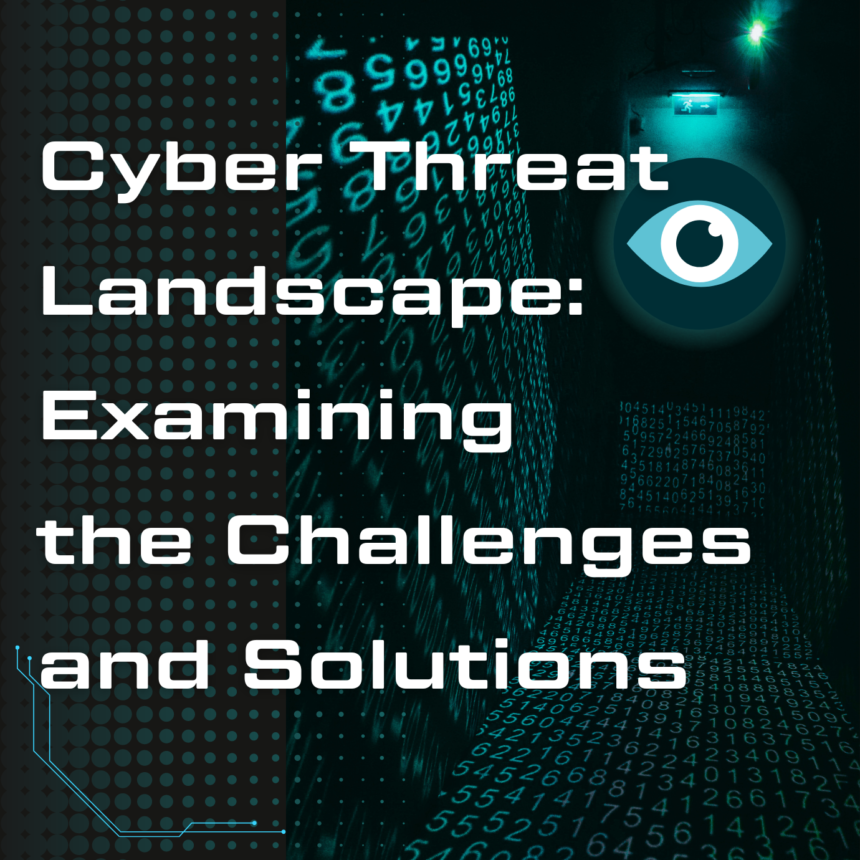The ever-evolving cyber threat landscape poses significant challenges for individuals, businesses, and governments worldwide. Understanding the nature of these threats and identifying effective solutions is crucial in mitigating risks and safeguarding digital assets. Let’s examine the challenges posed by the cyber threat landscape and explore potential solutions:
1. Sophisticated Cyber Attacks: Cybercriminals continuously develop sophisticated attack techniques, including advanced malware, ransomware, and zero-day exploits. These attacks can bypass traditional security measures and compromise sensitive data. To combat this challenge, organizations must adopt multi-layered security strategies that combine advanced threat detection technologies with robust incident response capabilities.
2. Insider Threats: Insider threats, whether intentional or accidental, can lead to significant data breaches and financial losses. Addressing this challenge involves implementing stringent access controls, monitoring user activities, and fostering a culture of security awareness and responsibility within organizations.
3. Rapidly Expanding Attack Surface: With the proliferation of Internet of Things (IoT) devices, cloud services, and remote work environments, the attack surface for cyber threats has expanded exponentially. Protecting this vast attack surface requires implementing strong network segmentation, continuous monitoring, and regular vulnerability assessments.
4. Cybersecurity Skills Gap: The shortage of skilled cybersecurity professionals poses a significant challenge in effectively combating cyber threats. To bridge this gap, organizations should invest in training and professional development programs, collaborate with educational institutions, and leverage managed security services to augment their cybersecurity capabilities.
5. Insider Information Sharing: Cybercriminals frequently share information and tools on underground forums, making it easier for them to launch coordinated attacks. Addressing this challenge involves fostering closer collaboration among organizations, sharing threat intelligence, and establishing industry-wide best practices for information sharing.
6. Regulatory Compliance and Privacy Concerns: Adhering to ever-changing cybersecurity regulations and protecting individual privacy rights can be complex. Organizations must invest in compliance programs, conduct regular audits, and prioritize data protection to ensure they meet regulatory requirements and maintain customer trust.
7. Social Engineering and Phishing Attacks: Social engineering techniques, such as phishing emails and deceptive messages, exploit human vulnerabilities to gain unauthorized access to systems or steal sensitive information. Addressing this challenge requires comprehensive security awareness training, email filtering solutions, and robust authentication mechanisms.
8. Nation-State Cyber Threats: State-sponsored cyberattacks pose a significant challenge, targeting critical infrastructure, intellectual property, and government systems. Defending against nation-state threats requires close collaboration between governments, intelligence agencies, and private sector entities to share threat intelligence and develop resilient defense strategies.
9. Emerging Technologies and AI-Powered Attacks: As emerging technologies like artificial intelligence (AI) and machine learning become more prevalent, cybercriminals are also leveraging them to launch sophisticated attacks. Developing AI-driven security solutions, leveraging machine learning for threat detection, and implementing ethical AI practices are crucial to address this challenge.
10. Continuous Security Monitoring and Incident Response: Organizations must adopt proactive security monitoring and incident response strategies to detect and respond to cyber threats promptly. Implementing Security Information and Event Management (SIEM) systems, security orchestration, automation and response (SOAR) platforms, and incident response playbooks can help organizations enhance their cyber defense capabilities.
By understanding the challenges and implementing effective solutions, organizations can better protect themselves against the ever-evolving cyber threat landscape. Maintaining a proactive security posture, investing in technology, fostering cybersecurity awareness, and fostering collaboration are key to addressing these challenges and staying one step ahead of cybercriminals.
